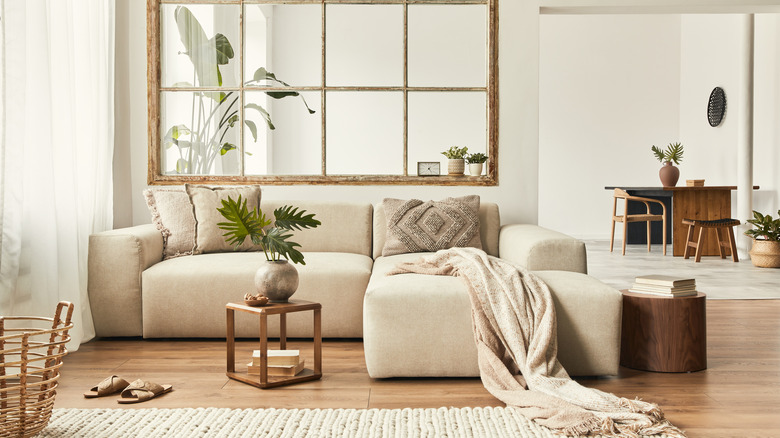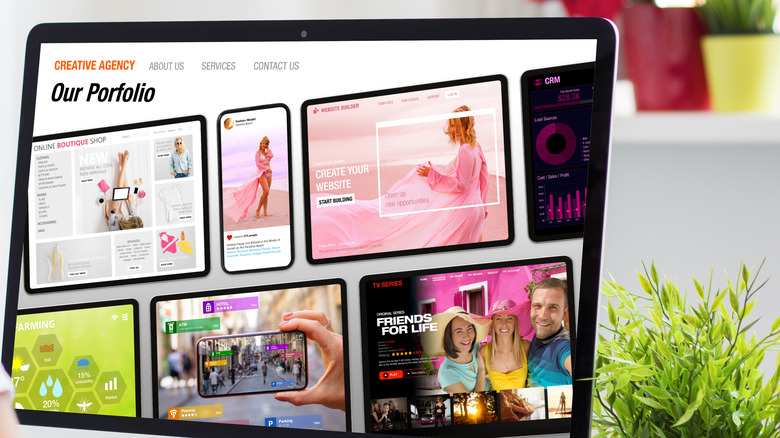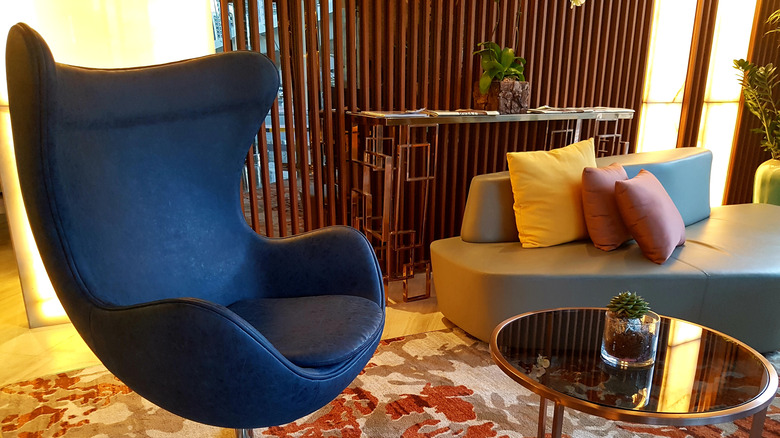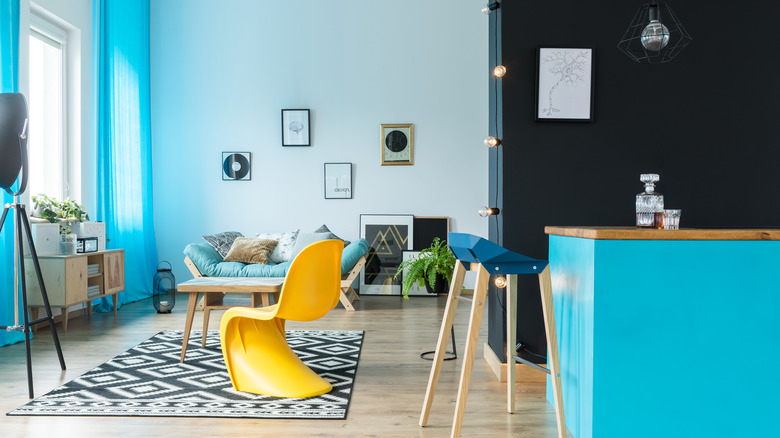5 Things You Should Do Before Hiring A Professional Decorator
The quandary over hiring a professional interior decorator usually falls into one of two categories. For some, it's a foregone conclusion, because their interests and talents lie elsewhere. For others, it's a question of what a professional might contribute that's beyond the client's ability or what they're able to imagine. It's no simple task to create the interior design of your dreams. Tastes vary widely, and materials range in terms of expense and availability, and that's before you even get to the variables of labor costs and how to find an interior decorator who you can trust.
Having a working knowledge of the task at hand will help. While the term designer is used so often that you'll be wondering what a decorator does, there's a simple way to distinguish between the two. As Forbes explains, a designer is someone who starts with the basic physical configuration of a space. That is, they're the ones who'll tell you that you need to seal up one window and create another or break down a wall. Decorators more specifically work with the aesthetics of a space as it presently exists. If you want to repaint your walls, add wallpaper, install new flooring, or update your soft furnishings, you need a decorator. However, there are several things you should consider before hiring one.
Crunching numbers
First, do you have the ability to complete the project yourself? Professional decorator Linda Merrill says that if your budget is under $5,000, you should try. Next, try to come up with every practical consideration in advance. Conducting an inventory of what you own, what you want, and what you think will take to accomplish your goals will ultimately repay you in saved time and money.
Other questions to ask yourself are: Will your project last days or become one that goes on for weeks? Will it limit the use of any areas of your home that are essential? Will the time spent, however brief, inconvenience other family members, pets, or neighbors? Even if you're not planning a full renovation, don't be that person who thinks your redesign won't affect anyone else — even if you live alone.
When it comes to materials, make a list of what you want and think about what is already in your possession. If you're looking for a unique design, it's important to budget any additional costs that might be incurred. Alternatively, those seeking a more eclectic design will need to consider the availability of certain materials or items of furniture.
Do research
Now, it's time to do your homework. When choosing a professional designer What are your criteria? According to Decoraid, you can start with a simple internet search, while always remembering to include "local" in your online inquiries. In addition, it might also help in your negotiations if you get an idea of the range of prices decorators charge for what you have in mind.
By narrowing your field, you can soon come up with a handful of possibilities, and the best way to do that is to have a look at the gallery of previous work that most good designers post online. Once you're satisfied you have enough profiles to begin, you can reach out, and most will be happy to conduct an interview by phone, over a video call, or (on rare occasions) in person. Do open with questions about their work or your ideas. Don't open with, How much will this cost? They have no idea — yet.
Check References
Between the time that you've arranged to chat and the time of your meeting, you'll want to ask for references. Hunker explains that all designers are not created equal, and a mismatch is another way in which your project can fail to reach its full potential. By this time, you should be familiar enough with the designer's work and what their strengths and weaknesses are. You should know whether the designer will be at your side throughout the redo and their level of commitment to shepherding your ideas into reality.
That's why you'll want to talk or exchange emails with a few of the clients the designer has worked alongside. Typically the designer will have a few ready-made for your contact, and that's fine. But you should know these folks, while they may have had a great experience, are handpicked. Choose a few designs from your designer's portfolio and ask to contact them.
Have Vision
The more ideas, information, and examples you can provide, the greater your chances of realizing what you see in your mind's eye. As the professionals at My Move caution, whenever you defer to a designer, you put your project at risk. It's the designer's job to offer advice, and explain the practicalities and budget, but if they lead you too far astray, you will have spent your money on something you don't particularly want.
Armed with that knowledge, you should show the decorator everything you would like to see in the space (of course, you can also e-mail images and links ahead of time), and that can and should include whatever telegraphs your idea: swatches, panels, articles, photos, and anything else you can imagine. You are, in effect, setting the scene for your designer. Once you've done that, give the designer a few days to turn your wishes into a plan.
Be flexible
Once you and your potential design partner have exchanged ideas and you have diplomatically asked how much they charge, you should have some degree of confidence. But this is also a juncture for cooling off. You need to incorporate the idea that redecorating — unless you're the designer working solely from your own artistic impulses — is an inherently collaborative venture. Clear as your vision may be, there will be places where one of the two of you will diverge in opinion. If you don't feel comfortable with the design of any part of the agreement, you can certainly ask another decorator for a quote.
A professional designer's blog called Room for Tuesday outlines more than a half dozen benefits to working with a professional designer, not the least of which is that person's access to the artisans and contractors who are going to breathe new life into your space. This means that as you search for the right decorator, you should also consider the abilities of any co-workers and employees. Now you are the biggest variable remaining. Are you ready?





